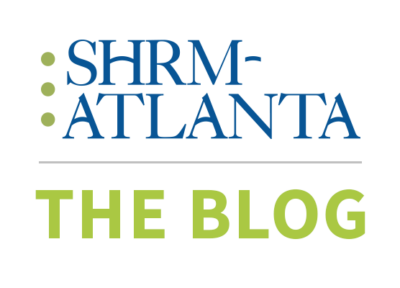From PartnerMD, SHRM-Atlanta’s Official Concierge Medicine Partner
Your employees’ health is crucial, especially when they’re the ones who keep the company moving. Sometimes we need to look beyond the surface to better understand health risks.
As an HR professional, you may have heard about executive health benefits. What can you do as a company to help your key employees identify their health risks before symptoms occur?
One common strategy is to implement an executive physical program. Executive physicals provide advanced tests and screenings that go beyond the typical annual physical.
In this article, we’ll explore three tests your executives may want to consider in 2025 to learn more about their risks.
1. CT Heart Scan With a Calcium Score
A CT heart scan with a calcium score measures the calcium in an individual’s coronary arteries. The calcium in the heart’s arteries is proportional to the amount of plaque buildup. As plaque grows, the risk of blocked arteries and a heart attack increase.
This test is best for people between 40 and 70 who are at risk for heart disease. It helps identify those at higher risk so that steps can be taken to prevent coronary events.
How does it work?
A calcium score test uses a CT machine to scan your employee’s heart. The scan uses a minimal amount of radiation to scan the pathways of the coronary arteries.
If calcium is identified, both the amount and location are reported. The test takes just a few minutes and does not require drugs or IV contrast dye.
How to understand the results
A calcium score of zero means that no calcified plaque was identified and the risk for an event in the next 5 to 10 years is quite low.
If calcium is identified, the amount of calcium is proportional to the amount of plaque, and risk is reported relative to age and sex.
This information can be factored into discussions on optimizing management of risk factors.
*Source: https://my.clevelandclinic.org/health/diagnostics/16824-calcium-score-screening-heart-scan
2. OpenDNA
Unlike a calcium score, which analyzes current risk, that can provide crucial information regarding your employees’ projected heart health and potential risks later down the line based on their genetics and health information.
OpenDNA is recommended for individuals under 40, individuals over 40 who are low-risk, and individuals over 40 who are considering medication.
How does it work?
This genetic test analyzes point mutations in your employee’s DNA. It then uses artificial intelligence to compare the employee’s sequence to those with heart disease, diabetes, or hypertension to assess their overall risk.
The employee provides a saliva sample using a buccal swab inside the cheek, and the physician sends the sample to OpenDNA for extraction and analysis.
How to understand the results
OpenDNA’s team reports a polygenic risk score based on their analysis. This score estimates the genetic risk of heart disease based on a person’s genotype profile and relevant genome-wide association study data.
This information can then be factored into decisions regarding additional evaluation and management. Like the CT Heart scan, OpenDNA testing provides access to otherwise hidden information.
*Source: https://www.partnermd.com/blog/what-is-opendna
3. Galleri Test
Galleri is a multi-cancer early-detection blood test that screens for many of the deadliest cancers. The test screens more than 100,000 DNA regions and 1 million specific DNA sites.
The Galleri test is recommended for use in adults with an elevated risk for cancer, such as those age 50 or older.
How does it work?
Through sophisticated lab techniques and computer analysis, the samples are screened for any evidence of a positive cancer signal.
If there is no cancer signal detected, the test is complete. For samples with a positive cancer signal, further analysis allows the lab to identify what tissue harbors a potential tumor.
How to understand the results?
Results are available approximately two to three weeks after obtaining samples . If no cancer signal is detected, there is still a small chance (reported 0.5% by Galleri) that a cancer is present.
If there is a positive signal detected, further investigation is recommended to determine the best course of action.
Galleri reports that a positive cancer signal is expected in approximately 1% of Galleri tests in people over 50 years old and, after further investigation, about 40% are expected to have a confirmed cancer diagnosis.
*Source: https://www.galleri.com/what-is-galleri/types-of-cancer-detected#block-glossary-45819
Executive Physicals at PartnerMD: Reduce Your Key Person Risk
How can your executives receive these tests? They can always talk to their physician and have tests ordered individually.
However, you can ensure your executives have the opportunity to get these tests and screenings by offering an executive physical program as part of your benefits.
At PartnerMD, we offer all three tests through two levels of executive physicals – an Enhanced Physical that lasts up to a half-day and a Signature Physical that lasts a full day.
As SHRM-Atlanta’s Official Concierge Medicine Partner, we’ll work with your company to build a program that fits your needs (and your budget), and we’ll work with your executives to maximize the clinical value they get out of their physical.
Let’s work together to keep everyone healthy within your workplace.





